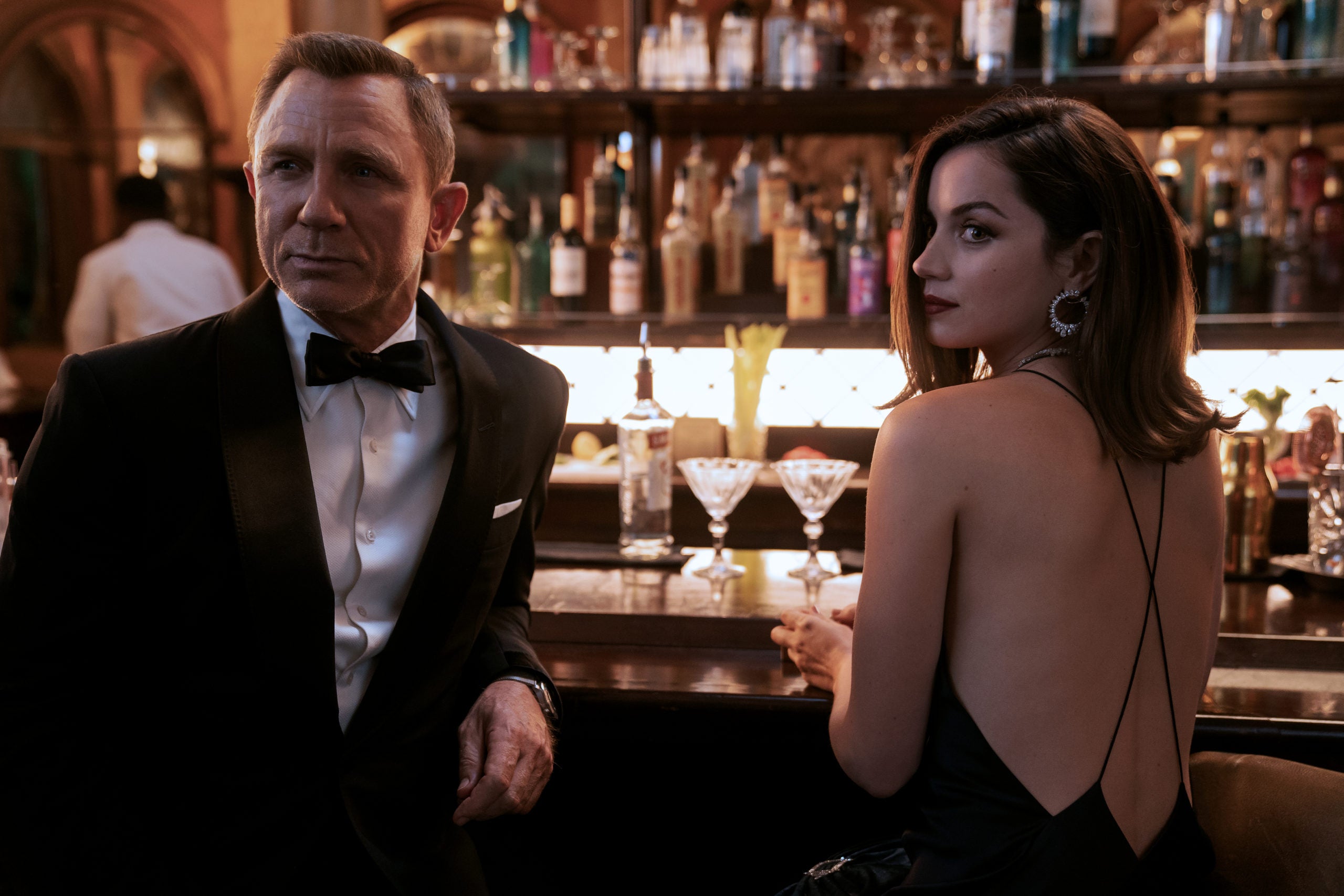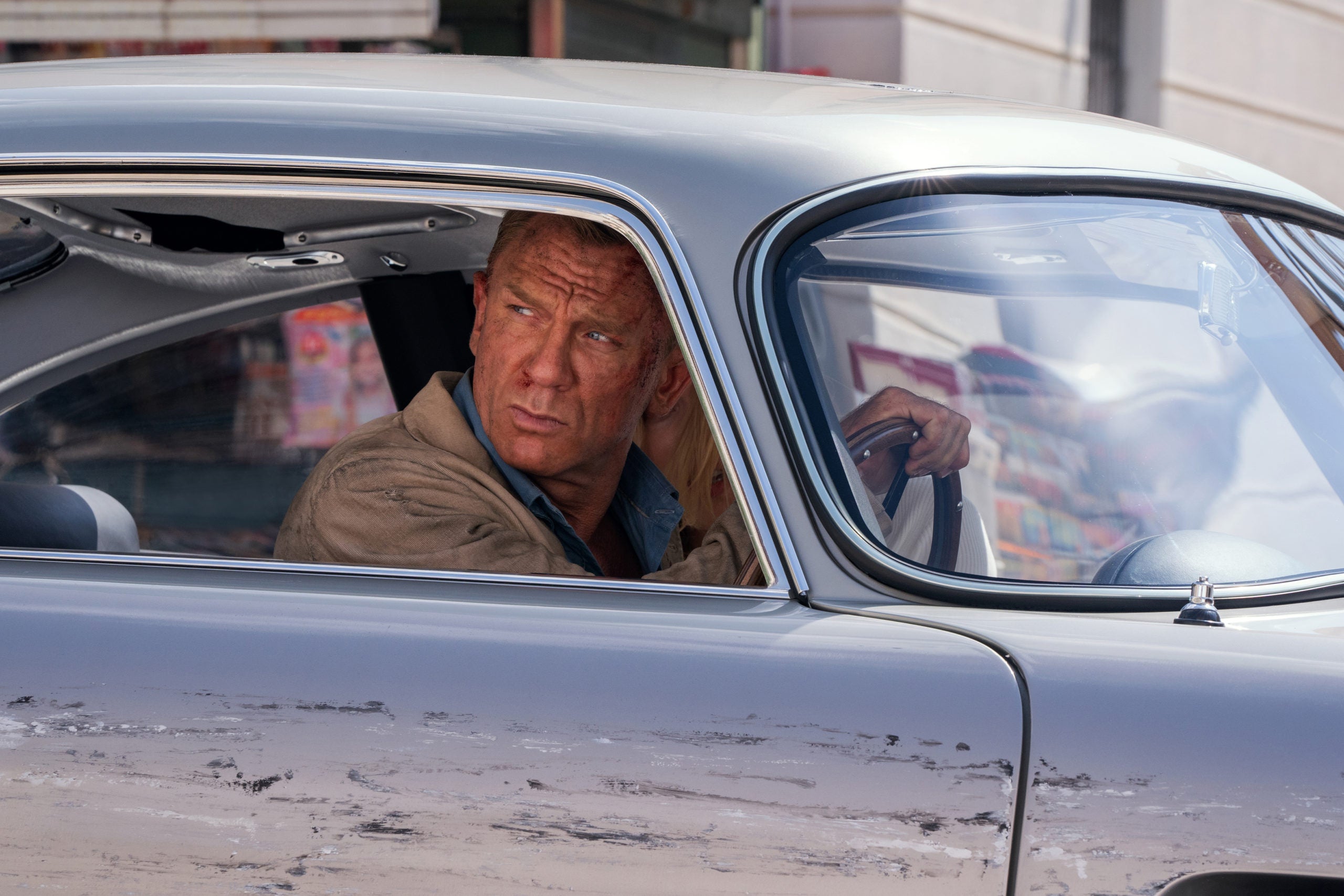The first James Bond film came out in 1962, and over the last 60 years, there’s almost never been a gap between 007 movies as long as the one between Spectre and the latest, No Time to Die. Partly, that was due to the pandemic, which delayed Daniel Craig’s swan song as the superspy, but I bring it up to suggest that moviegoers have rarely been without Bond in their lives. Even if you hate this franchise — maybe you think it’s antiquated or sexist or just kinda silly — it’s hard to escape the long cultural shadow of MI6’s most famous operative.
Not that that fact keeps journalists, critics and audiences from sometimes wondering if James Bond is old hat. When a movie like Austin Powers or OSS 117: Cairo, Nest of Spies comes out, spoofing 007’s cocksure, shaken-not-stirred performative cool, it throws into sharper relief that no matter how many time the producers try to refresh the franchise with a new face and a new attitude, these movies are still ultimately about a callow ladies’ man who goes around killing people, bedding babes and delivering wry quips. Every time a new action film breaks the mold — Die Hard or The Bourne Identity or even the Marvel Cinematic Universe — it redefines the nature of the blockbuster, putting Bond’s producers in a position of continual catch-up. And it brings up an uncomfortable question: Who really needs 007 anymore?
It’s a question No Time to Die embraces by making it part of the film’s plot. Craig is the longest-running Bond in terms of consecutive years in the role — his first 007 film, Casino Royale, came out during the George W. Bush administration — and the recent installments acknowledged how his Bond was getting too old to remain in the field. But No Time to Die goes beyond the spy’s physical deterioration to hit at something more existential about this particular James Bond. Tellingly, the movie constantly places its main character in situations in which he’s either been put out to pasture or has been replaced by newer, hungrier characters. (Those characters, by the way, are often women.) And even when Bond is out there saving the day, there’s a grumpy efficiency to what he does. Like a lot of aging cops in crime films, James Bond in No Time to Die is getting too old for this shit.
That feeling is exacerbated by Craig’s departure from the role, which made him a superstar but also seemed to be a drain on him. Of course, we all remember his “rather slash my wrists” comment from years ago when asked about doing another Bond film, for which he later apologized, but even at this week’s No Time to Die premiere, he expressed reservations about all the media/fan craziness that comes with playing the character. “I don’t know how much I’ll miss this,” he said, indicating the evening’s red-carpet hoopla, and indeed Craig’s general grumpiness about the massive, circus-like apparatus surrounding the franchise has dovetailed nicely with the way his films have thought of 007. Starting with Casino Royale, the series went into a darker, moodier direction — there was none of the cheekiness of the Roger Moore/Pierce Brosnan years — and the heaviness of mortality hovered over the films, especially after the death of his true love Vesper Lynd (Eva Green) at the end of Casino Royale. The movies fit Craig’s no-nonsense demeanor — he played a James Bond who was an actual, realistic grownup.
And one of the unalterable realities of life is that people get older, and No Time to Die finds the spy grappling with his diminished stature. At first, it doesn’t seem too bad for James as the film opens with him and his current flame, Spectre’s Madeleine (Léa Seydoux), enjoying their life off the grid. Bond has retired from active duty, and he likes being a civilian, but when he goes to visit Vesper’s grave, he’s ambushed by a sneak attack from his old foes in Spectre, which forces him and Madeleine to go on the run — and, ultimately, for Bond to go into hiding on his own in order to keep her (and him) safe.
The film flashforwards five years, when some masked baddies steal a deadly bio-weapon involving nanobots, and the head of MI6, M (Ralph Fiennes), does what he always does in situations like this, ordering his underlings to find 007. But there’s a twist, because while we all assume he means Bond, M is actually summoning Nomi (Lashana Lynch), a young, elite agent who’s the new 007. She dutifully tracks down Bond because it appears that his old foes in Spectre may be involved — not to mention their leader, the diabolical Blofeld (Christoph Waltz), who’s been locked away in a high-security prison since the end of Spectre. Bond is flattered to be asked back into the fold, but his ego’s a bit bruised when he meets this new 007. Going back to your old job and finding out that everyone there has successfully moved on without you — and that you can be replaced — sure can be a tough pill to swallow.
Soon, Bond is back out there doing what he does best — well, Craig’s version of Bond, anyway, since the rampant shagging and Swinging Sixties blitheness of previous 007s are a thing of the past. (No Time to Die director Cary Joji Fukunaga has even gone so far as to point out that Sean Connery’s behavior as Bond would “basically” be considered rape.) Instead, Bond mostly keeps confronting his own obsolescence. In Cuba, he meets up with fresh-faced CIA agent Paloma (Craig’s Knives Out costar Ana de Armas), who’s the very definition of the prototypical Bond girl, except for the fact that she doesn’t seem remotely interested in sleeping with him. Instead, they have a perfectly platonic professional relationship as they infiltrate a gala swarming with Spectre operatives. Throughout the sequence, Paloma is a partner, not a love interest — she mostly just wants to geek out about how cool it is to be working in the field — and besides, he knows he’s too old for her anyway. She’s not thinking of him that way.

Of course, some things don’t change in the 007 cinematic universe — Bond is reunited with Madeleine, and Seydoux is more than 15 years younger than Craig — but as our heroes try to retrieve the bio-weapon, encountering along the way a new villain named Lyutsifer Safin (Rami Malek), No Time to Die constantly ponders where an older Bond fits into this world. Sure, Bond’s a living legend — an annoyingly perky CIA agent (Billy Magnussen) practically fanboys out about being in the spy’s presence — but Craig’s brooding performance hints at the character’s growing reluctance to be the hero. Most James Bond movies are about the dashing secret agent knocking off the latest supervillain and claiming a new lithesome beauty — in No Time to Die, he just wants to go somewhere quiet with Madeleine and settle down, a development complicated by surprising changes in Madeleine’s life since they said goodbye five years ago.
What has always been appealing about the Bond films is their Peter Pan-ish, eternal-reset quality: We get older, but 007 stays the same age, never having to worry about dementia or failing eyesight or the other frailties that descend upon the rest of us. But the Craig films have built those realities into the narrative from the start: Near the beginning of Casino Royale, his Bond (who’s just been promoted to 007) ruefully tells Judi Dench’s M, “I understand double-Os have a very short life expectancy.” Where other Bonds seemed bulletproof, Craig has let us see every ache and pain — the truth is, he’s been too shaky for active duty since Skyfall — and No Time to Die puts Craig’s age front and center during the action, never hiding the fact that a 50-something man is about the only thing keeping humanity from being wiped out by this bio-weapon.

These nods to aging have been part of what was so memorable about Craig’s Bond films — rather than minimizing the character, they made him more heroic — and No Time to Die’s willingness to force the superspy into some very un-007 settings is intriguing. (I’m struggling to remember another of these movies in which Bond shared as much on-screen time with a little kid.)
But in No Time to Die, recognizing that Bond is moving past his physical prime cuts both ways. Sure, seeing a more mortal 007 is refreshing, but it also underlines what’s less original here. If Bond films are only as good as their bad guys, No Time to Die is among the weakest thanks to Malek’s lame villain. Plus, the new film can’t resolve an unspoken tension running throughout the Craig series, which is that Bond never got over the death of Vesper — and, likewise, the subsequent films have struggled to create a love interest to match what Eva Green brought to Casino Royale. For a second straight movie, Seydoux just doesn’t have much chemistry with Craig — he does seem too old for her — which is a huge problem considering that No Time to Die is built around James envisioning Madeleine as his ride-off-into-the-sunset happy ending after years as a death-defying superspy. And, frankly, the whole film’s construction is so familiar — another megalomaniac wants to destroy the world — that even though Bond himself has caught up with the times, these movies haven’t kept pace.
There are surprises in store for those who see No Time to Die — plot twists that are new to this 59-year-old film series — which honor how Craig’s Bond has been markedly different from all the ones who came before. But if this iteration of 007 thoughtfully tried to reconfigure the character — acknowledging what’s anachronistic about him, forcing him to grapple with middle age — No Time to Die still stubbornly adheres to the old idea of how James Bond should be. Craig forced Bond to evolve, but the movies kept giving us the same supersized spectacle that, outside of Casino Royale and Skyfall, led to diminishing returns. Even if you reimagine Bond, he still resides in a very specialized, somewhat musty action-flick realm that’s not nearly as innovative as something like Mission: Impossible — Fallout.
In No Time to Die, 007 comes face-to-face with his own irrelevance — Craig boldly took that challenge on, but I’m not sure the franchise is willing to follow his example going forward.

